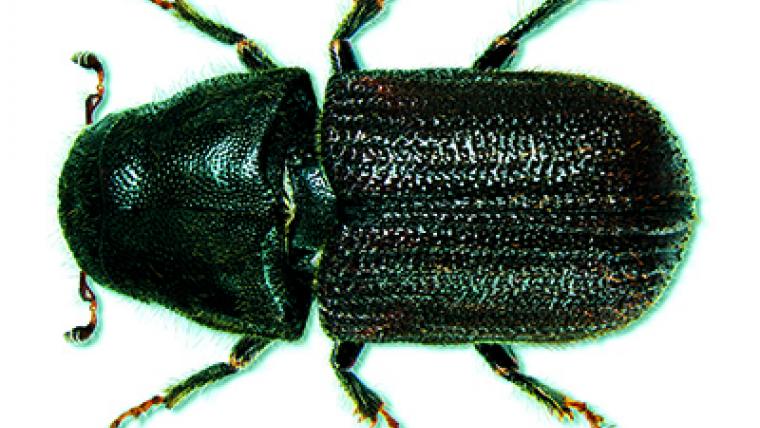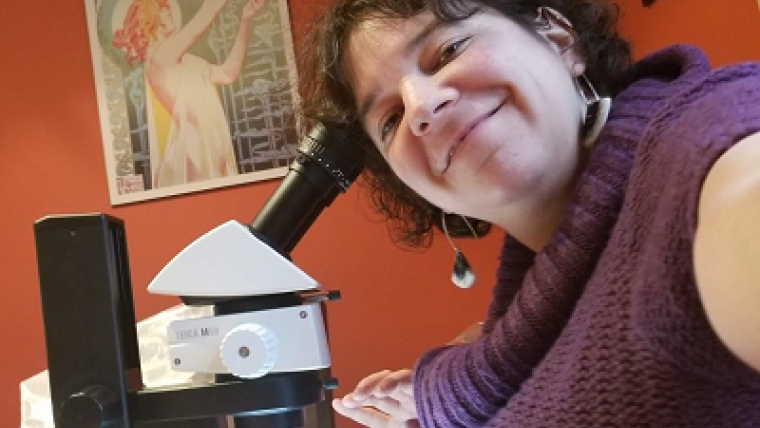Are bioplastics better than regular plastics?
Experts Peter Gogolek and Jean-François Levasseur discuss bioplastics, a type of plastic made from renewable biomass sources like vegetable fats and oils, straw, and woodchips. Are bioplastics truly better than petroleum based plastics? Listen to find out.
Transcript
Joël Houle (Host): Welcome everyone to Ask NRCan – our podcast series where we sit down with our experts to talk about an aspect of the work that we do here at Natural Resources Canada. Today, we’re talking about bioplastics: what are they, how are they different from regular plastics, and what type of plastic-related research are we doing at NRCan?
For those of you who are new to the show, we call this series Ask NRCan because we want to hear from you. The purpose of the show is to share with you not only the type of science that we do but also why we do it. So, at the end of the episode, if you have any questions on this topic, head to Twitter and tweet at us using the hashtag “#AskNRCan”. Our experts will do their best to answer all relevant questions.
Sounds good? Let’s get to it.
[theme music]
The first of two experts on the show today is Research Scientist Peter Gogolek. Peter, how are you?
Peter Gogolek: I am very well.
Joël Houle: Perfect! You work with plastics, correct?
Peter Gogolek: My main work with plastics is trying to find energy uses for them, transforming them into a useful product that way.
Joël Houle: I guess before we can understand what bioplastics are we kind of need to first understand what are plastics.
Peter Gogolek: Plastics are not a new or even human invention. Nature gave us the first plastic: natural rubber. The world’s first synthetic, fully synthetic plastic was something called bakelite. Invented in New York, in 1907 by Leo Baekeland. He was also the one who coined the term “plastics”. Today, plastics cover just about any material consisting of a wide range of synthetic or semi-synthetic organic compounds that are malleable and can be moulded into solid objects. Today we have thousands of different plastics, each with different roles and characteristics. One plastic can block air from reaching food, another can be transparent, another stretches and bounces back, another will trap air, and another could stop bullets. All these different types of plastics makes our daily life easier, but at the same time, it increases the complexity of how to deal with them once they have outlived their usefulness. This is one of the reasons why so much emphasis is being placed on trying to identify novel ways to re-use, recycle them, or even to develop new plastics derived from plants that can be easily biodegradable in the environment.
Joël Houle: So, what are bioplastics and how are they different from typical plastics?
Peter Gogolek: Conventional plastics are derived from a hydrocarbon source such as natural gas or petroleum. Bioplastics are manufactured from renewable biomass sources, such as vegetable oils, straw, corn starch, wood, that sort of thing.
Joël Houle: Are bioplastics and biodegradable plastics the same thing?
Peter Gogolek: Many people will assume, and this is not totally correct, that if something is derived from biomass, then it is biodegradable. However, the use of “bio” feedstocks does not necessarily mean that the finished product, a plastic or otherwise, will be biodegradable. For example, a bioplastic called polylactic acid – this is the film for straw bails in agriculture – is made from plant feedstocks and is considered biodegradable in commercial composting facilities. But polyethylene terephthalate, PET, that’s for single-use plastic bottles. Bioplastic made from plant feedstock is not biodegradable. In other words, “bio” in bioplastics does not necessarily mean biodegradable.
Joël Houle: Are bioplastics better than regular plastics?
Peter Gogolek: Unfortunately, that’s not an easy question to answer. If you produce a non biodegradable bioplastic using a lot of energy in the manufacturing process, much more than a traditional hydrocarbon-based plastic, then the answer’s probably no. If, however, a fully biodegradable bioplastic can be developed that is able to replace difficult-to-recycle plastics, it could have a significant environmental benefit.
Joël Houle: Is NRCan involved in plastics research at all?
Peter Gogolek: Yes, for many years, NRCan has been involved in plastics research, looking at trying to develop new ways of recovering energy from plastics and that’s where I’ve been working. It has also been working on developing the next generation of biodegradable bioplastics. I think we will continue to see interesting discoveries and developments from my colleagues at NRCan over the next few years, so stay tuned.
Joël Houle: This is all very interesting, thank you so much Peter.
Our second guest on today’s episode is Jean-François Levasseur, Director of Industry, Innovation and Indigenous Programs Division at the Canadian Forest Service. Jean-François, how are you?
Jean-François Levasseur: I’m doing very well today, Joël.
Joël Houle: Awesome! Can you start by explaining to us what the Canadian Forest Service is doing to support innovation in the forest industry?
Jean-François Levasseur: Well, the Canadian Forest Service has been long-time involved in programs that really target providing strategic support to R & D, and to help implement our bioproducts agenda. And really, this is in a context of taking an opportunity – which is the emerging forest bioeconomy – to help the sector diversify its revenue and new products versus what we all know the forest sector being traditional. And so, that’s really what drives the impetus of our investments into R & D, of which obviously plastics are going to come into play.
Joël Houle: Speaking of plastics and bioplastics, can you give us an example of a project that supports the research and development of bioplastics?
Jean-François Levasseur: Our agenda for the forest sector is a little bit larger than just bioplastics, so it involves all forest bioeconomy elements, but a good example we do have is in Quebec City. We’ve got BOSK bioproducts who is a leading entity in North America I would say, who is really working on an emerging PHA-based plastic that’s going to be a replacement, compostable, and biodegradable made out of what’s fascinating for us is it’s the base feedstock material is effluent treatment plant sludges from the pulp and paper industry which offers a new revenue. They’re working also with a really cool new development company, a small start-up, called SIGMA DECTECH; they specialize in advancing bioplastics so that they’re the glue in this project. And lastly, where we came into play with the CFS funding is through NRC in Boucherville, l’Institut des matériaux. They’ve been working with those two actors to advance that really innovative application that’s attracting a lot of attention is at the stage of relatively advanced towards commercialization.
Joël Houle: Wow this is really interesting research, are there many cases of bioplastics being produced right now?
Jean-François Levasseur: It’s an interesting question. Without a doubt, bioplastics are garnering a ton of attention these days. We know that there are other pathways, particularly towards PHB and polylactic acid, PLA, mainly out of the agricultural sector but some Canadian pulp and paper companies and forestry companies are working with global researchers to try to advance those families of compounds. And in a broader sense, the agenda of the forest companies themselves is for diversification into the whole agenda of plastics, and I would argue that biocomposites are also in the same type of challenge and family where wood fibres would be introduced into plastics as replacement for light weighting and increased recyclability properties. So an interesting family, and certainly an active area of research in Canada.
Joël Houle: Definitely. What are we, as Natural Resources Canada and the Government of Canada, doing to encourage more bioplastics projects?
Jean-François Levasseur: That’s a super timely question. NRCan is currently working on establishing a bioplastics challenge in collaboration with our counterparts at Agriculture Canada, with the main goal of improving that research and advancement around biodegradability of the bio-based plastics that are currently or on the verge of emerging from either agricultural or wood-based biomass. What we’re seeking to do is find better compatibility with the composting infrastructure, both at home and with cities, because that’s still the challenge that bioplastics face today: they’re not easily compostable and consequently they’re not the whole nine yards biodegradable, I would say.
Joël Houle: So this challenge, if people are interested in knowing more about this would they go on the NRCan website or is there another place to look this information up?
Jean-François Levasseur: Actually, the challenge is part of a larger initiative organized by Environment and Climate Change Canada in its response to the Plastic Charter signed recently under the G7 this year, and we anticipate this is emerging rapidly. It’s going to come out at the Innovation Science and Economic Development website. They host a challenge website and our NRCan challenge around bioplastics is going to be posted there imminently.
Joël Houle: Perfect, thank you so much Jean-François for taking the time to come and talk to us today.
Jean-François Levasseur: It’s a pleasure!
Joël Houle: So, this is the end of the episode, but it doesn’t mean that it’s the end of the conversation. If you have any follow-up questions for Peter and Jean-François, get on Twitter and tweet at us using the hashtag “#AskNRCan”.
Also, if you are interested in learning more about the scientific work that we do here at Natural Resources Canada, check out our online magazine called Simply Science. We have tons of great content for you, including articles, videos, and previous episodes of this podcast series. If you check out the podcast page for this episode, we’ll have links available to any relevant material so that you can learn more about bioplastics.
The best way to find Simply Science is either to Google it, or click on the banner from our website at nrcan.gc.ca.
And, as always, if you liked this episode and you are listening to us on Apple Podcast, Stitcher or Soundcloud, please consider subscribing so you can check out any previous or future episodes.
I think that’s it for us today. Thank you for listening! We look forward to hearing from you, and we’ll see you next time.
Page details
- Date modified:




